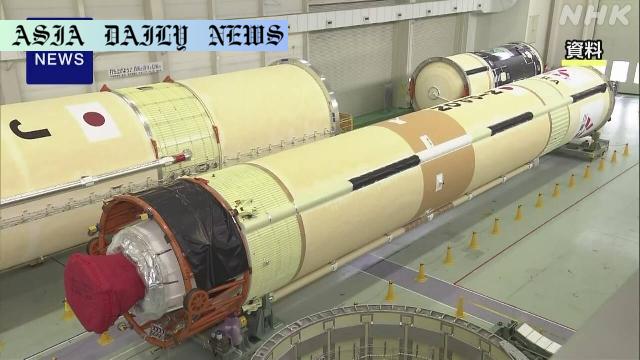H2A Rocket – Final Launch Rescheduled to Early Sunday Morning in Japan, Featuring Greenhouse Gas Satellites.
- The H2A rocket’s 50th and final launch rescheduled for Sunday.
- The delay was caused by an electrical system malfunction on the second stage.
- A GOSAT-GW satellite for greenhouse gas data will be carried into space.
- H2A will be succeeded by the more cost-effective H3 rocket model.

The Legacy and Importance of Japan’s H2A Rocket
The H2A rocket, Japan’s flagship space launch vehicle, has been a cornerstone of the country’s aerospace endeavors for over two decades. Known for its efficiency and reliability, the rocket boasts an impressive 98% success rate, with only one failure occurring in 2003 during its sixth launch. Over the years, the H2A has played a monumental role in launching satellites into space, catering to a variety of missions, including telecommunications, Earth observation, and scientific research. As its final launch approaches, it marks the end of an era for Japan’s advanced aerospace capabilities, making room for a new generation of innovation with the H3 model.
Reasons Behind the Rescheduling
The final and momentous 50th launch of the H2A was originally scheduled for earlier in the week. However, due to an electrical system malfunction in the rocket’s second-stage systems, the mission had to be postponed. Mitsubishi Heavy Industries, the operator of the H2A, took prompt measures to address the issue, replacing the faulty component and meticulously reinspecting the entire system. The revised launch is now set for 1:33 a.m., Japan time, on Sunday, from the Tanegashima Space Center in Kagoshima Prefecture. These decisive measures highlight the commitment to safety and success that has characterized the H2A program for years.
Key Mission Objectives
The primary payload for this historic launch is the GOSAT-GW satellite, tasked with an ambitious mission to measure greenhouse gas levels in Earth’s atmosphere. These data are crucial for understanding climate change and global warming’s impact on ecosystems and human life. The satellite’s deployment underscores Japan’s dedication to contributing valuable insights to the ongoing fight against climate change. In addition to its scientific significance, GOSAT-GW also adds symbolic weight to the final chapter of the H2A’s illustrious story.
The Transition to H3 Rocket
With the H2A journey nearing its conclusion, Japan plans to transition to the H3 rocket, a newer and more cost-effective model designed to meet the growing demands of modern-day space exploration. The H3’s development addresses certain limitations of the H2A, such as high production and launch costs, making it a more competitive option in the international aerospace market. This shift signifies a new beginning for Japan’s aspirations in space, as the country remains committed to innovation and progress in the domain.
A Historic Moment Awaited
People around the world look forward to the final launch of the H2A with great anticipation. The rocket has not only been a technical marvel but also a source of national pride for Japan, showcasing the country’s capability in advanced aerospace technology. This launch will not only add another feather to the H2A’s cap but also symbolize the high expectations placed upon its successor. Whether it’s the advanced technology, the scientific contributions, or the context of a transitional period in space exploration, the H2A’s final moments are bound to be etched in history as a landmark event.



Commentary
Celebrating the Achievements of H2A Rocket
The H2A rocket stands as a testament to Japan’s incredible achievements in the aerospace industry. Over two decades, its near-flawless success rate of 98% has fortified Japan’s reputation as a reliable player in the global space industry. The rocket’s contributions to satellite launches for a wide range of applications are nothing short of monumental. Its final launch marks not just an end but an enduring legacy, leaving a profound impact on the country’s technological progression. This is undoubtedly a moment of reflection and celebration.
A Time to Look Ahead: The Rise of H3 Rocket
With the H2A rocket retiring, the future of Japan’s space exploration now rests on the capable shoulders of the H3 rocket. This transition represents a strategic move to adapt to evolving demands in the aerospace sector. By reducing costs while improving efficiency, the H3 aligns with the needs of contemporary satellite launches. It’s thrilling to imagine how this new chapter will unfold as Japan continues to bring advancements that push the boundaries of possibility. While the H2A has set a high benchmark, the H3 undoubtedly has the potential to achieve even greater feats.
The Broader Significance
The global space community will also be observing Japan’s transition with intrigue and respect. Each launch highlights the importance of international collaboration and technological progress. The emphasis on carrying out environmental missions, such as deploying the GOSAT-GW satellite, showcases a commitment to tackling global challenges through space technology. Watching these elements come together during the H2A’s final launch and the future endeavors of the H3 is both exciting and inspiring, ensuring Japan’s continued influence in shaping the future of space exploration.